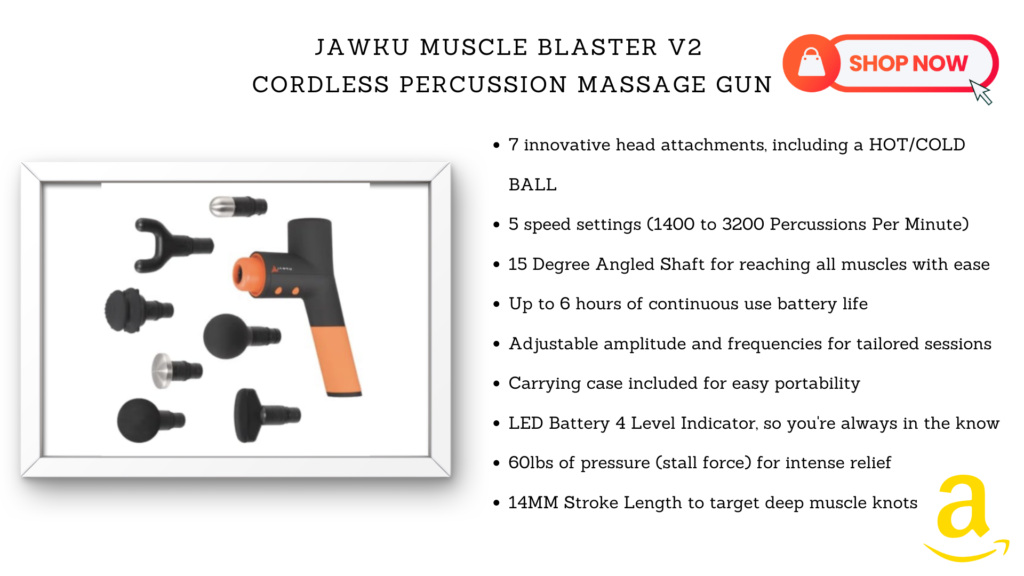Revolutionize Your Recovery: Using Massage Guns for Rotator Cuff Injuries
Percussion massage guns have become the talk of the town, delivering a host of incredible benefits like reducing muscle tension, boosting mobility, and enhancing blood flow, making them the go-to tool for pain relief and post-workout soreness. Chances are, you’re already familiar with these magical devices, whether you own one, have used it, or know someone singing its praises. Nowadays, you might even spot them in the hands of massage therapists, chiropractors, and physical therapists.
Now, just like any tool, these massage guns have their time, purpose, and rightful place. It’s tempting to go all out and use the massage gun on any sore spot that catches your attention, but that’s where you need to exercise caution. Improper usage can lead to some serious risks, including painful inflammation, torn tendons, organ or nerve damage, and even long-term injuries.
So, let’s delve into the top five spots you should avoid, and take your massage gun safety to a whole new level.
First up, steer clear of the greater trochanter, that bony area on the side of your hip. The fluid sac surrounding it, known as the bursa, doesn’t appreciate friction. Subjecting this area to the vigorous motions of a massage gun can lead to painful inflammation and discomfort. Instead, focus your attention on your quads and glutes for improved hip, knee, and lower back mobility. If your hip is already sore, soothing ice might be a better alternative.
Next, be wary of the area directly over your kidneys. These delicate organs, nestled deep within your back, are susceptible to damage from the intense vibrations of a massage gun. To locate your kidneys, reach around your back and find your lowest rib bones. They’re just below where you’d clasp a bra strap. Imagine placing a grapefruit on each of these lowest ribs, and that’s the region you should avoid with your massage gun. Opt for using the gun on your muscles, not on your organs and bones, for a relieving back massage.
Now, here’s a crucial one—stay away from the long head of your biceps tendon, found under the area where you reach across to your front shoulder. This spot is often tense and painful, but be cautious. The biceps tendon isn’t as tough as it appears, and applying pressure or vibration to this area can lead to inflammation or even tears. Target the underlying issue instead, which may involve improving rotator cuff and middle back strength while being mindful of your lifting techniques.
Moving on to the upper traps, that knotted region where your neck and shoulders meet. Believe it or not, that knot is not a muscle; it’s your first rib. Vigorously massaging this area might seem like a quick fix for nagging neck tension, but beware! Just beneath your first rib lie the nerves and blood vessels supplying your arms and hands. Excessive pressure can compress these vital structures, leading to tingling sensations or worse, long-lasting nerve injuries. If you want to ease neck tension, use your hands instead of a tool. This way, you can feel if you’re nearing that delicate first rib and adjust accordingly.
Lastly, be mindful of your spine. Sure, you know where it is, but the key is to avoid aggravating it with a percussion massage. The bones you feel along your back protect your spinal cord, discs, and nerve roots—areas not designed to handle direct vibration forces. Agitating these bones with a massage gun poses a greater risk than benefit, potentially causing severe and complicated spine injuries. For a safer alternative, consider using a foam roller (even one that vibrates), as it distributes pressure over a broader surface and reduces the risk of targeted spine agitation. Of course, if you’ve been advised of low bone density, consult your doctor before attempting this.
So, there you have it—a blend of wisdom and caution. Keep your massage gun, but use this newfound knowledge of anatomy to prioritize safety in its application. Remember, even with proper placement, avoid excessive pressure while the gun is vibrating. Gentle pressure should suffice, as pressing too hard may lead to injuries involving organs, nerves, or bones. So, wield your massage gun with care and reap the rewards of its therapeutic wonders!

